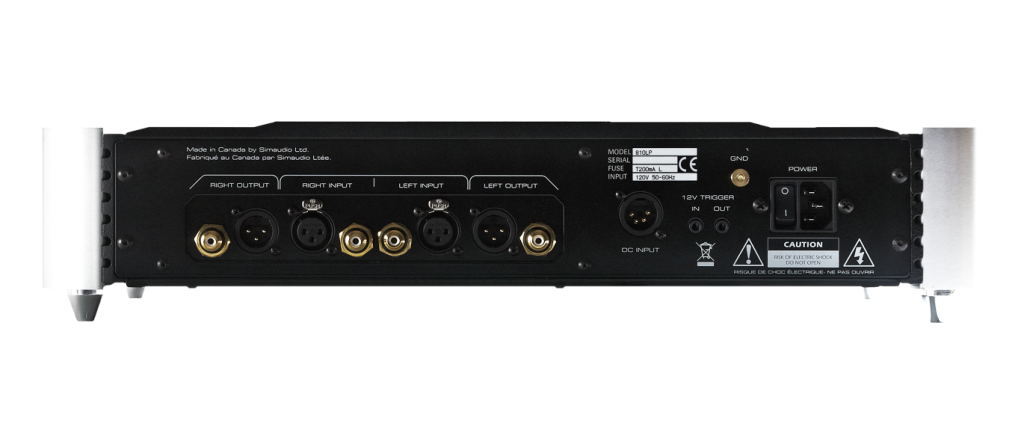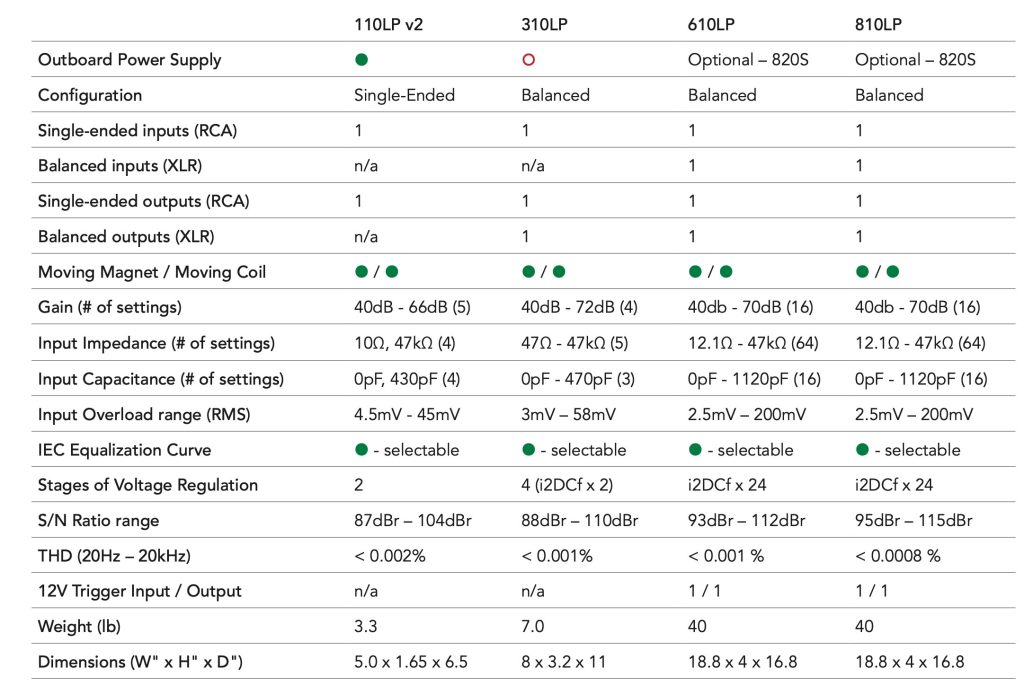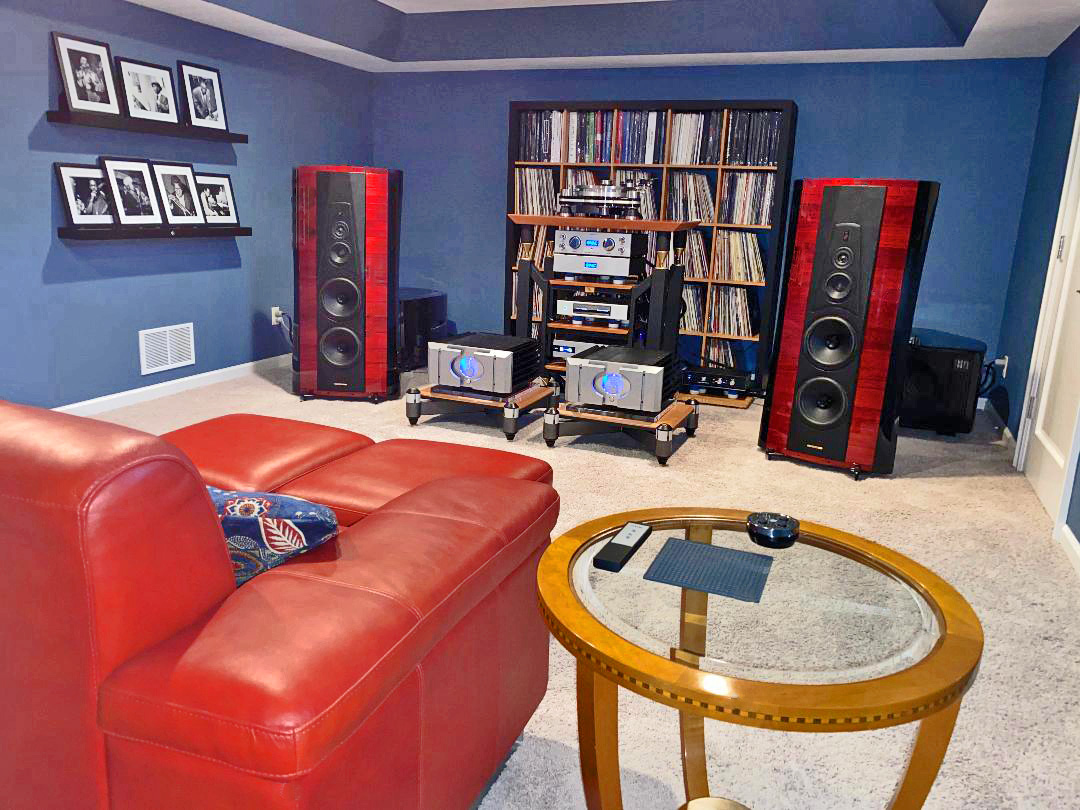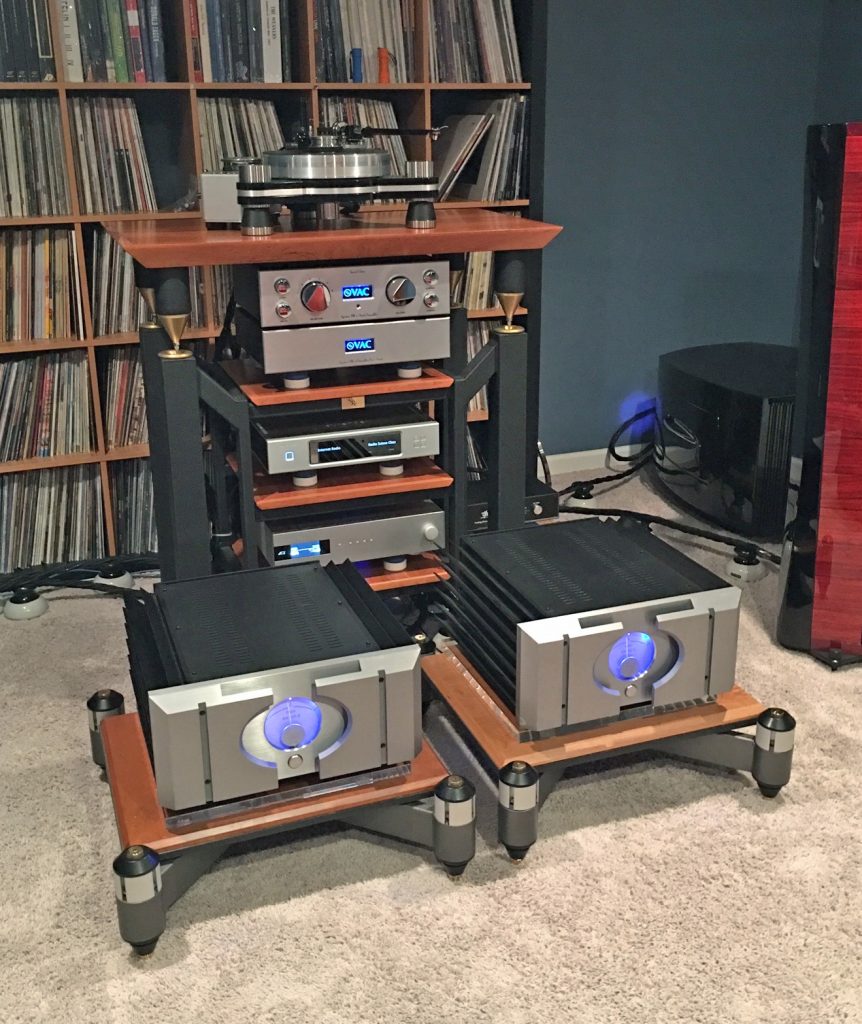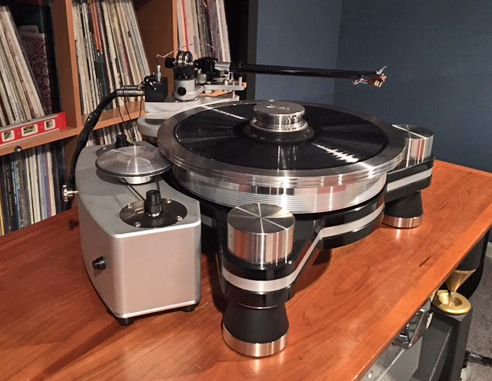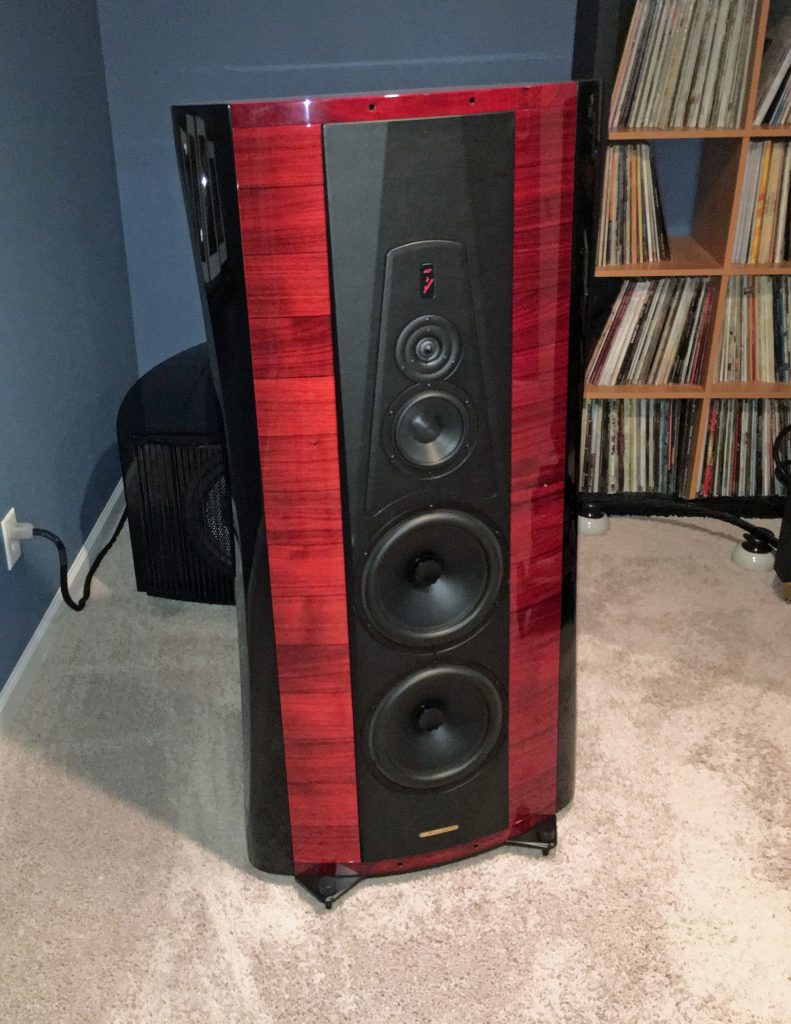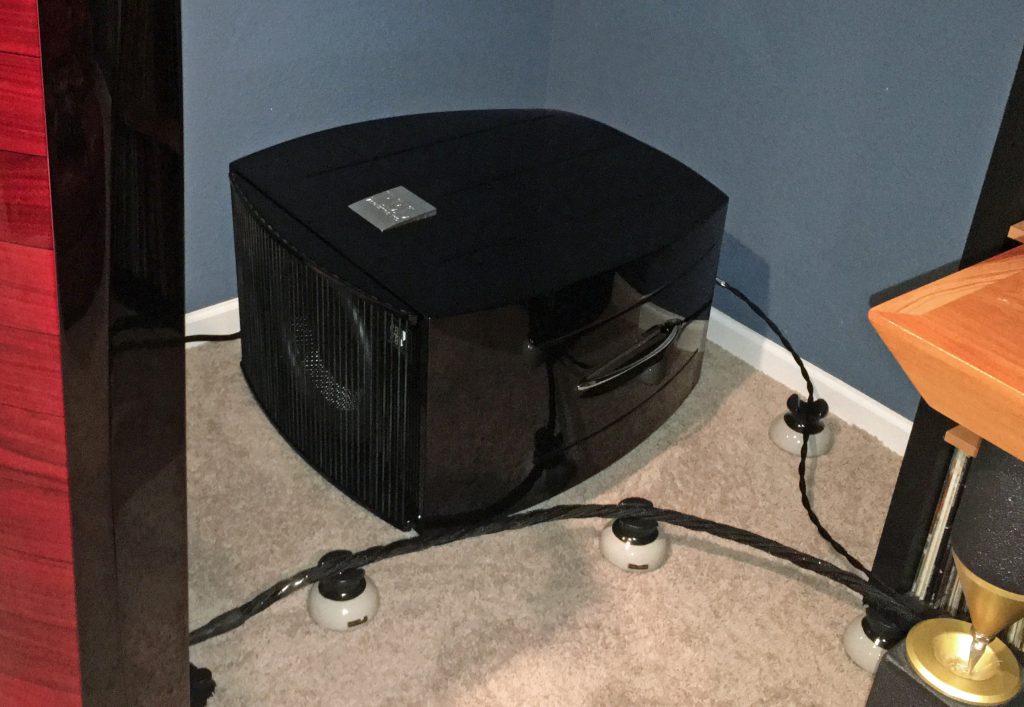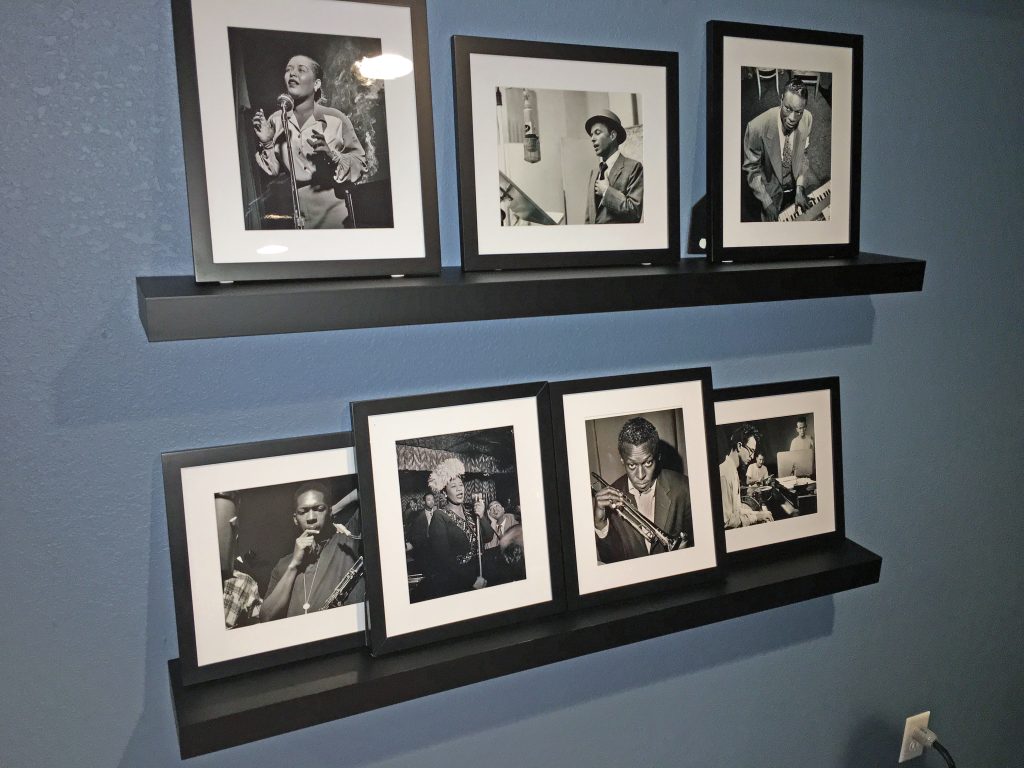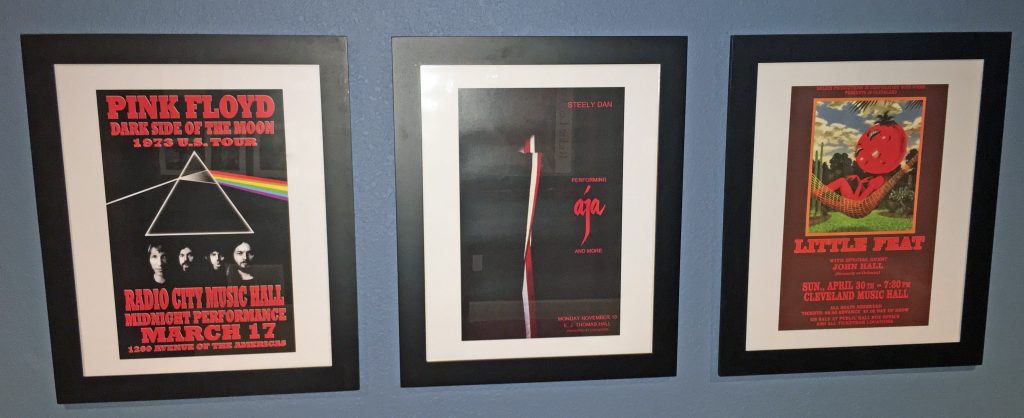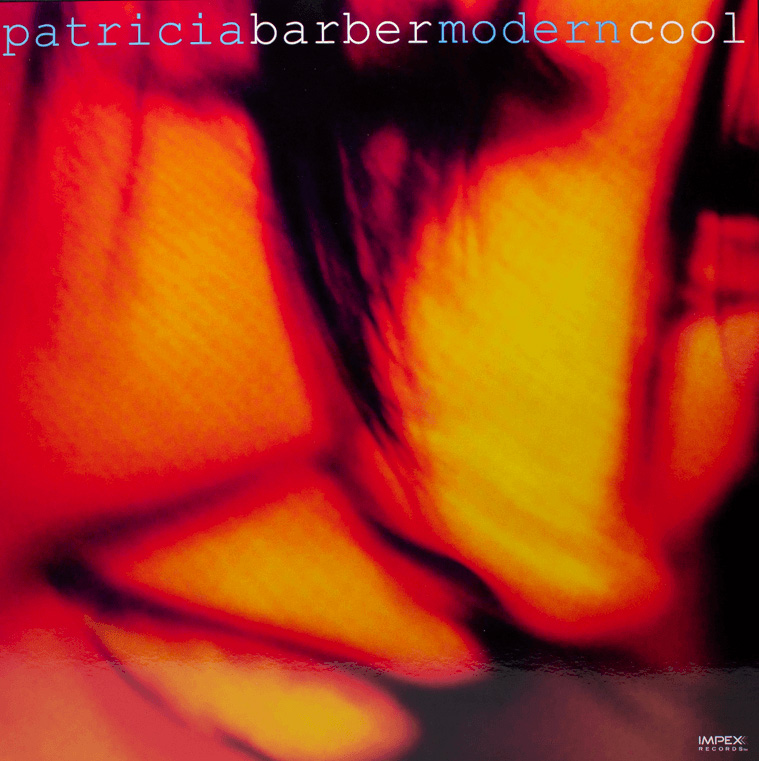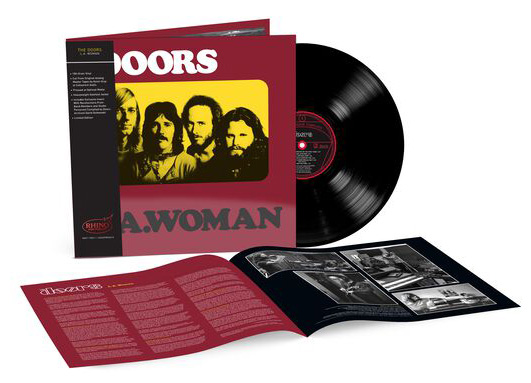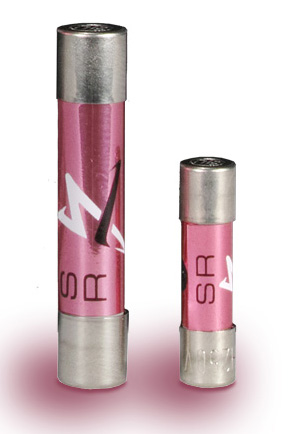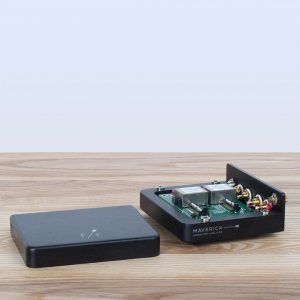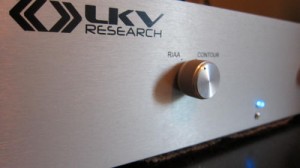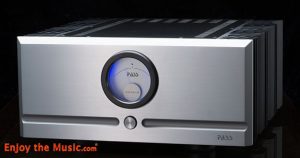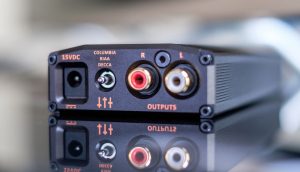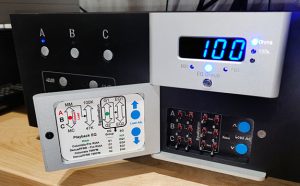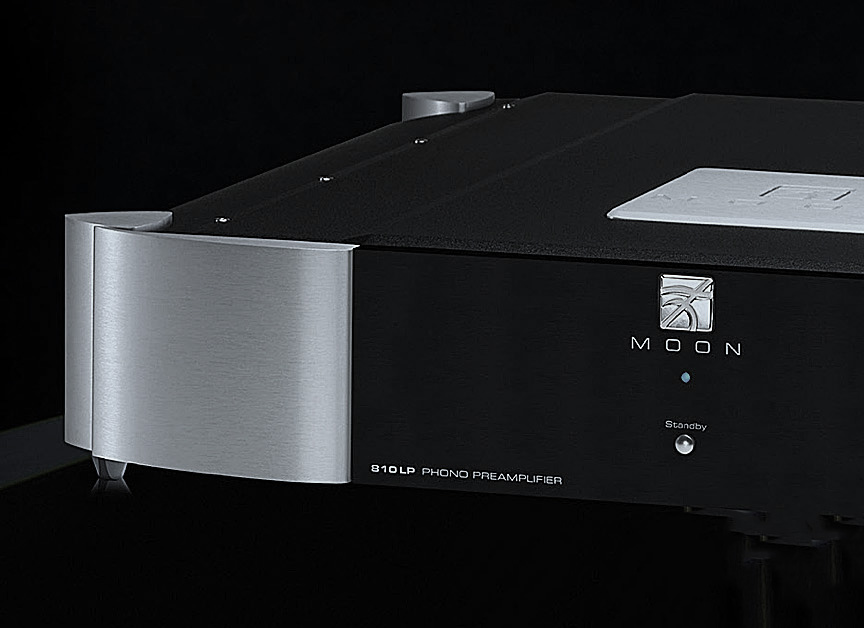
As I continue to re-evaluate my system, I have been auditioning various standalone tube phono preamplifiers. I am a big fan of utilizing tubes in the front end of my system when paired with solid-state preamplifiers and/or amplifiers. The unwritten rule claimed by many audiophiles is that there must be tubes somewhere in the system for the very best in sound. This is obviously a subjective thing, but for me there is something about tubes that adds a certain sense of musicality and proper bloom to the presentation.
As you would guess, each brand and design has both advantages and disadvantages when it came to sound quality and setup. In my discussions of these findings, with my good friend Johnathan Spelt of Ultra Fidelis Audio in Wauwatosa, Wisconsin, he suggested that I should check out the Simaudio Moon 810LP phono preamp ($13,500). Though the 810LP is solid-state, he was confident that I would be very surprised, if not totally dazzled.
It was only a matter of weeks when the doorbell rang and a new 810LP was delivered for review. Thanks again to Jonathan, but also to Anne Paul at Simaudio and Angela Dunlea at Ammonite Media for making this happen. Jonathan was correct! The Simaudio Moon 810LP was an absolute delight and far exceeded my expectations.
One critical comment before I dive in. I have to reiterate the importance of what the very best high end audio dealers can provide. They not only have the ability to present a deep portfolio of various brands and components, but they can also provide the knowledge and experience needed for system synergy. Though purchases on the Internet can be tempting, you can avoid wasting significant time, money and quite often total failure when trying to mix and match on your own. Jonathan knows my system and taste very well, and his guidance was spot on!
Caveat Emptor
It cannot be overstated that system synergy and personal taste are critical when evaluating high-end audio products. This review is based on my subjective requirements, my subjective ears, my specific system configuration, and my specific listening room. This combination is only one data point of many that exist out there for these components. Please consider my comments and analysis appropriately.
Review System
I have included a comprehensive list of all my components and a description of my listening room. Please click on my name in red above if this information is needed for reference and comparison purposes.
Design
Details, details, details! Everything matters, and it seems that Simaudio has gone the extra mile to consider all the possibilities when it comes to build quality, aesthetic appeal and both load and gain flexibility. At 40lb. the 810LP is a real beast—possibly the heaviest phono preamplifier that I have reviewed. Just getting it out of the shipping box seemed like it might be challenging, yet it slipped out like a charm thanks to the superbly engineered and unique design of all the packaging.
The 810LP is assembled on a solid chassis/platform that is manufactured entirely in the Simaudio's factory with their own in-house CNC machine. The curvature of the front panel and the distinctive design of the Simaudio Moon badge immediately grabs your eye. Finish options include all black, all silver, or a two tone black and silver. I have been told that custom finishes are also possible. I preferred the two tone as it really stood out in my audio rack with a certain amount of power and majesty.
Resonance control and isolation are clearly important priorities. Circuit boards are mounted on a five point gel based floating suspension. Height adjustable metal cones or footers are mounted to the base and have been designed/tuned specifically for the 810LP. Power supply voltage regulation includes i2DCf (Independent Inductive DC filtering), and there is one inductor for each and every IC in the audio circuit's signal path (24 stages in all).
If you pop the hood, you will quickly notice the clean professional layout of all the printed wiring boards and internal components. The audio circuit is a dual-mono fully balanced differential design. Custom components are utilized throughout. This includes metallized polypropylene film capacitors with tolerances of 1%. Four-layer PCB tracings have also been implemented with dedicated ground and power planes using pure copper and with low impedance characteristics.
The shortest possible signal paths are employed for faster transients and the lowest possible noise floor. This is especially important when considering your load and gain options and how these settings are accessed (see my additional comments below).
The 810LP offers one pair of XLR inputs, one pair of single-ended (RCA) inputs, one pair of XLR outputs and one pair of single-ended (RCA) outputs. I found this to be extremely helpful as I currently have all single ended needs for my current turntable, arm and cartridge setup, though I have also been experimenting lately with an all XLR combination on several other configurations and components.
When it comes to load and gain options, the flexibility is very impressive. For clarity, please see the comparison chart below for the Simaudio portfolio of phono preamplifiers. When considering the 810LP in the last column, there are 16 settings for gain. This ranges from 40 dB to 70 dB. There are 64 settings for impedance. This ranges from 12.1Ω to 47kΩ. There are also 16 settings for capacitance. This ranges from 0pF to 1120pF. Lastly, you have the option to select either the RIAA or IEC standards for equalization.
My only concern here, is that all the dip switches to facilitate these various options are on the bottom of the unit itself. This means that you need to pull out the 810LP from your audio rack each time that you want to change the settings. The argument is that this design and implementation provides the shortest signal paths and thus the best sound. Based on my own listening results, it's hard to argue with this strategy.
With all of this flexibility, I was able to dial in my somewhat sensitive van den Hal Crimson XGW Stradivarius MC cartridge like never before. With a fairly wide range of suggested impedance settings by van den Hal (20Ω to 47kΩ), and after some trial and error, I ended up using an impedance of 168Ω and a capacitance of OpF and a gain of 68 dB. I also selected the IEC equalization curve, as the overall sound with my two REL 25 subwoofers seemed more natural and locked in.
You should also note that like many phono preamplifiers, there is a long burn in period to get to your very best sound performance. For the 810LP, Simaudio suggests that it will take 500 hours to reach full potential (as mentioned in the Users Manual). With the help of Jonathan Spelt and Ultra Fidelis Audio, I was able to borrow a RIAA burn in filter to get this accomplished fairly quickly. I pulled out an old CD player from the museum closet and connected it to the 810LP with the filter and some interconnects. I set the CD player on repeat and after a few weeks the results were fairly dramatic and all for the good. Again, this was just another example of what a great dealer can provide. This kind of guidance and support can really make a difference!
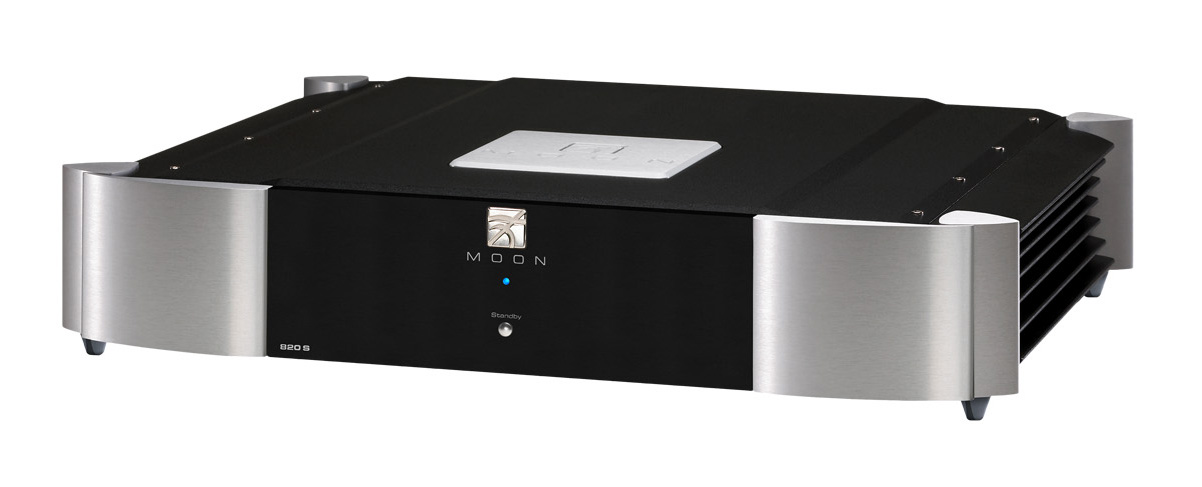
Simaudio Moon 820S Power Supply
There is an optional standalone Simaudio 820S power supply for the 810LP (see the above picture). At a MSRP of $8500, this upgrade is said to improve performance to even higher and more impressive standards. The 810LP can be utilized for up to two Simaudio components from the following list of line stages, phono preamplifiers, DACs and CD transports: 740P, 650D, 750D, 680D, 780D, 610LP, and the 810LP. The 820S can easily be stacked with the 810LP, and its front profile is a nice match for all of these components. Please see the Simaudio website for additional features and information. I have not had the opportunity to audition the 820S, but I like the idea that it can be shared with another component to spread the cost and get performance improvements across two components. Maybe in a follow-up review!
Sound
After playing just a couple of LPs via the 810LP, I knew there was something very different happening in my listening room. Often, changes can be subtle and may take some time to register. This was not the case here. I almost immediately experienced a sense of weight and scale to the music that I had not heard before. There was now an additional amount of richness to the sound, with possibly even more detail and three dimensionality. I want to be clear—it was not a darker or a more restrained presentation, which can sometimes occur when this switch is flipped. If anything, there was more life and inner density to the music.
If we work from the lower registers and up, I also sensed something of a very slight increase in bass energy. Others might have been very pleased with this change. It was different enough, that I actually checked all of my cartridge and tone arm settings, but I made no changes there. Then I subtly readjusted the crossover and gain on my two REL 25 subwoofers, and that served the system well. These subwoofer adjustments are not all that unusual when you change major components in your system, but it was a first time for me when evaluating a phono preamplifier. Maybe my earlier settings were over compensating for something missing in my current system. Typically, I am fighting for every ounce of bass performance that I can get. In any case, there was plenty of magic going on now in the low end.
The mids and highs were what really caught my attention for a solid state design. There was a liquidity and ease that yielded a wonderful tapestry of harmonic structure and tone. Again, this was not a false warmth. It was also not what many would call a tube or even a highly colored sound. I would almost call the presentation something of a hybrid. Full bodied and sometimes lush, yet lightning quick and dynamic. I must also add, that it took all of the burn in time mentioned earlier to really open up the sound and unleash these levels of immediacy and expression. I had to be very patient, as I was advised by Jonathan, but the patience more than paid off!
Lastly, in my system, I found that the 810LP afforded superb levels of transparency and pin point imaging. Spatial queues seemed to pop out of nowhere with attack and tangibility that left you sitting up with attention. One reason for this, is the pitch black background that the 810LP provides during playback. This is one of the quietest phono preamplifiers that I have heard and it greatly helps the presentation.
I would not claim that these were all new bench marks for all of these specific variables, but when considering the aggregate, the 810LP was more than competitive with other flagship phono preamplifiers at several times the price—both solid-state and tube. For new audiophile LP reissues and original pressings, my speakers often disappeared and left me in the recording venue with the vocalists and the musicians standing before me. The suspension of disbelief was never better in my listening room.
Music
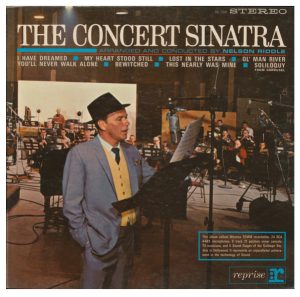
Frank Sinatra, The Concert Sinatra (Reprise - 33 RPM LP)
Released on the Reprise label in 1963, this is one of those little gems that never gets the publicity and respect that it deserves. The Concert Sinatra was directed and arranged by Nelson Riddle, with a backup orchestra of 76 musicians (the largest ever for a Sinatra recording), and it was recorded at the Goldwyn Film Studios in West Hollywood, California. It was also recorded using Westrex 35 mm tape (normally used for filming movies), and twenty-four RCA 44-RX ribbon microphones. All of which might be key reasons for the superb sound quality of this LP.
I have been on an original pressing kick lately, and I found this pristine copy at a local record store for $3. Talk about an OG that can be considered an audiophile recording! I don't have the 2011 Mofi LP reissue, but with the 810LP in the playback chain, I cannot imagine these songs sounding any better. The width and depth of the huge orchestra stretched out way beyond my speakers. You can hear the layers and layers of strings and brass across the soundstage. Frank's voice is clearly defined front and center and just behind the speaker plane. On "Old Man River," there is a timbral purity and harmonic rightness to his vocals like only these early Capital and Reprise recordings can provide. Bravo to Frank for this incredible performance and of course the 810LP for shining a light on everything this LP has to offer!
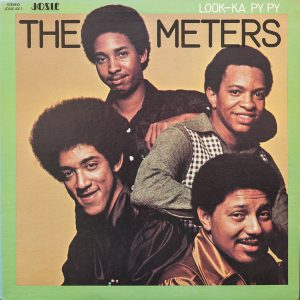
The Meters, Look-Ka Py Py (Jackpot - 33 RPM)
When it comes to Funk, The Meters are the gold standard for me, and fortunately for us fans, their recordings are superbly recorded. Look-Ka Py Py was the groups second release on the Josie label in 1969. Based in New Orleans, group members included Ziggy Modeliste on drums, Art Neville on organ, Leo Nocentelli on electric guitar and George Porter Jr. on bass. Look-Ka Py Py original pressings are very difficult to find in any condition, but those posted in Discogs as near mint have been listed in the $400 to $500 range.
This reissue was released in 2023 on the Jackpot label and was mastered by non-other than Kevin Gray. In my opinion, this might be one of Kevin's finest efforts. Instruments are nicely defined and three dimensional. Though bass seems to be slightly set back and less prominent in the mix, all of the instruments are virtually dripping with texture and amazing harmonics. Ziggy Modeliste on drums is particularly locked in and wonderfully recorded. The incredibly realistic snap of his drum sticks on the snare and hi-hat will have you nodding your chin with every beat. The 810LP pushes this music to its very best. Be careful if your spouse or significant other happens to stroll by the listening room. You will be on your feet dancing with your partner before you know it!
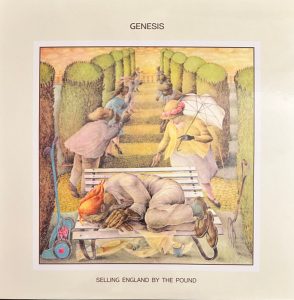
Genesis, Selling England By The Pound (Atlantic 75 Series - 45 RPM)
I have several pressings of this title including the original UK, the original Japanese, the original USA, and also the Classic Records 33 RPM. This new 45 RPM Atlantic 75 Series reissue has breathed new life into a recording that I never thought was possible. Originally released in 1972, Selling England By The Pound was one of the last two albums produced by Genesis with Peter Gabriel still in the band (The Lamb Lies Down On Broadway released in 1973 was the final with Gabriel).
I was emotionally moved by this reissue when I first listened to it. I was very pleased that Chad Kassem and Analogue Productions made it happen. Like most Genesis fans, a 45 RPM audiophile pressing of this recording was an answer to our dreams. But, I sat stunned on the first spin after I added the 810LP to the system! Again, we have this "weight and scale" thing going on that really takes the music to another level. Finally, we have the proper bottom end wallop and drive for Phil Collins on drums and Mike Rutherford on bass. Not to be missed, Steve Hackett on guitar and Tony Banks on keys seem to expand, explode, and radiate throughout the entire soundstage. Peter Gabriel's vocals hang before you with so much more definition and air, that I thought I was listening to a different recording. I feel fortunate to have seen Genesis perform this Rock Classic back in the day, and the 810LP was the final step that really transported me back to that experience!
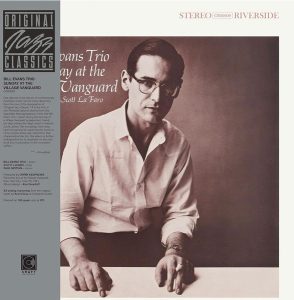
The Bill Evans Trio Featuring Scott LaFaro, Sunday At The Village Vanguard (Craft Recordings OJC - 33 RPM)
Released in 1961 in both mono and stereo on the Riverside label, Sunday At The Village Vanguard has grown over the years to be one the our most important live jazz recordings, and one of the most coveted by collectors. Bill Evans and his Trio consisted of Evans on piano, Scott LaFaro on bass, and Paul Motian on drums. Many are familiar with the story. This was the final performance by the Bill Evans Trio with bassist Scott LaFaro, who was sadly killed in a car accident eleven days after the recording. There are several incredible sounding reissues of this set, including 45 RPM stereo pressings from Analogue Productions and Mobile Fidelity (One Step) that both sell for upwards of $1000 on Discogs. You can double or triple that for a near mint mono original. This new 2023 stereo reissue mastered by Kevin Gray and released as part of the Craft Recordings Original Jazz Classics (OJC) series is also a phenomenal pressing!
When one listens to this recording for the first time, in some ways the ambience of the venue, the tingling of the glasses, and the low chatter of the audience seems to overwhelm the senses. Though this 2023 OJC pressing is simply amazing, it was not until I added the 810LP that the picture suddenly became almost a three dimensional video of the mind (sorry for the drama). More than ever, I could really focus and hear deep into the emotion of all three musicians through their instruments. The clarity and definition of each key stroke by Evans, the complex harmonic structure of each pluck by LaFaro, and the dynamic verve of each driving backbeat by Motian was now even more amazing. The slate has now been wiped clean and the results are so much more coherent and fundamentally correct. Thank you Kevin Gray! Thank you Simaudio Engineering team!
Final Thoughts
At a MSRP of $13,500, the flagship Simaudio Moon 810LP phono preamplifier is not inexpensive. In fact, for most of us, it is far out of reach and has to be added to the never ending list of components that we can only dream about. Yet, for those seeking the very best and can afford it, the 810LP should be strongly considered, even when compared to the most elite of the other high end flagship phono preamplifiers. Many are several times the price! Fit, finish, and build quality are first rate. Setup flexibility is exceptional. Performance and presentation is outstanding. A must audition if you are in the market at this price point! Very, very highly recommended!
810LP Phono Preamplifier
Retail: $13,500
Simaudio Ltd.
1345 Newton Road
Boucherville, Quebec, J4B 5H2
CANADA
450.449.2212




